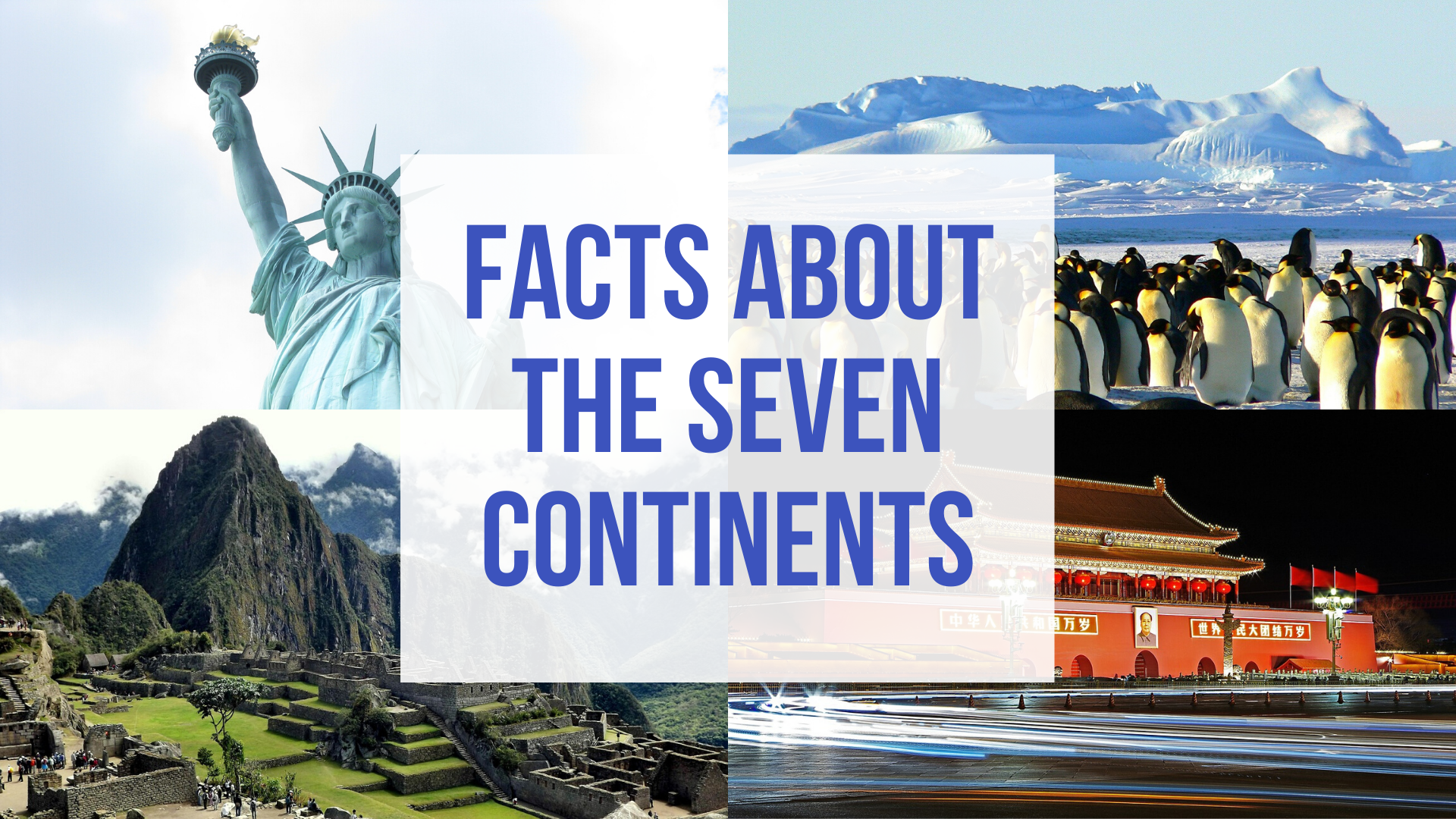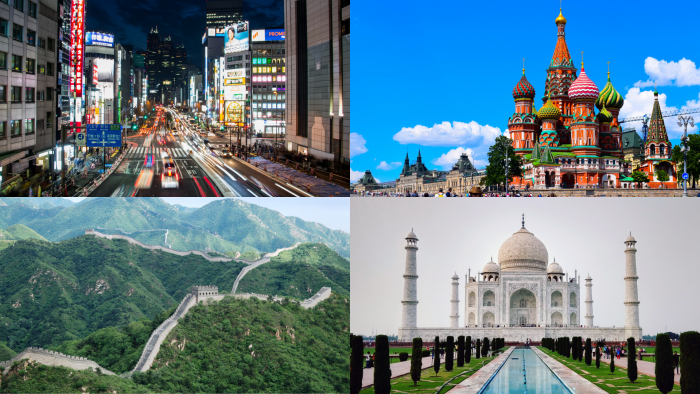
7 continents make this world special, they include North America, Asia, Africa, South America, Europe, Australia, and Antarctica. These continents make up the largest landmasses in the world and most of its population.
‘There are seven continents in the world, but can you name them all? Do you know what a continent is? If you want to know more about the seven continents, you have come to the right place.
“To discover new continents, you must be willing to lose sight of the shore.” — Brian Tracy
From 1 Continent to Seven
Did you know that the current seven continents on Earth were once all connected? About 175 million years ago, there was only one single supercontinent on Earth.
Scientists called that supercontinent Pangea.
In a process that lasted millions of years, Pangea broke up into seven pieces that drifted slowly to occupy their present-day positions on the planet.
But continents have not stopped drifting, so more continents could be formed in the very distant future.
What Are the Seven Continents?
Although there is some controversy on the subject, it is widely accepted that the 7 continents on Earth the following:
- North America
- South America
- Antarctica
- Europe
- Asia
- Africa
- Australia
Africa
Africa occupies 11,670,000 mi2 or 28,489,869 Km2.
Its estimated total population is 1,119,307,171. And its largest city is Lagos, Nigeria with a population of about 15,118,780.
Africa is the second continent on the planet both in terms of size and of the total population.
There are 54 different independent countries in Africa.
About 15% of people on Earth live in Africa.
Africa has a wide variety of different climates. There is a sharp contrast between the dry climates of Northern Africa that are located over the equator and those more temperate climates in Southern Africa under the equator.
“If there are dreams about a beautiful South Africa, there are also roads that lead to their goal. Two of these roads could be named Goodness and Forgiveness.” — Nelson Mandela
The continent is known for its many unique species of animals, with more than 7,000 different types of mammals and over 100,000 types of insects. Some of the more well-known African animals include camels, giraffes, elephants, or rhinoceros.
Most of the African continent is surrounded by water: the Indian Ocean in the East, the Atlantic Ocean in the West, the Red Sea to the Northeast, and the Mediterranean Sea to the North. The closest continent to Africa is Europe. The closest distance between Africa and Europe is just 8.9 miles (or 14.3 kilometers).
Antarctica
In contrast, very few people live in Antarctica. The estimated population is around 4,913, and its largest city is the McMurdo Station with an approximate population of only 1,258.
The total land area of Antarctica is 5,405,000 mi2 or 12,949,940 km2.
Antarctica covers the Southern Pole and it is mostly covered in ice all year around. Frigid temperatures make Antarctica’s weather one of the harshest on the planet.
Asia

With a total population of 4,494,302,221, Asia has the largest population of all the continents on Earth. About 60% of people of Earth live in Asia. It is also the most densely populated continent in the world with approximately 203 people per square mile.
It is also the largest continent, with a landmass of 17,210,000 mi2 or 44,029,797 km2. Asia covers about 9 percent of the planet’s surface.
The largest city in Asia is Tokyo, Japan, with a total population of about 37,126,000.
Its landmass is the Eastern part of Eurasia (roughly East of the Ural Mountains). To the east, Asia is bordered by the Pacific Ocean, but Asia also borders the Indian Ocean to the South and the Arctic Ocean to the North.
Some of the world’s oldest civilizations come from Asia, such as the case of Japan and China.
Australia
The total population of Australia is 39,901,000. Its land area is 2,970,000 mi2 or 5,179,976 km2. The largest city on the continent is Sidney, Australia with a population of 4,921,000.
The mainland is solely occupied by the country of Australia (the country and the continent are two different things), but the continent also includes Tasmania, New Guinea, New Zealand, and other islands.
When the continent was discovered by Europeans, it got its current name from the Latin word “Australis,” which means southern because of its geographical location. Two oceans surround Australia: The Pacific Ocean on the west and the Indian Ocean on the east.
Over 80% of all the flora and fauna of Australia is unique in the world. The largest reef in the world, The Great Barrier Reef, is in Australia.
Australia has been inhabited for about 45,000 years. European settlers began arriving in the 18th century. Since then, many people from Asia have also settled on the continent.
Europe
Known as the “old world,” Europe has a land area of 3,931,000 mi2 or 7,769,964 km2. Its total population is about 738,949,000, which is approximately 11% of the world’s population. Its largest city is Istanbul, Turkey, with a population of 14,657,434.
Europe is the western area of the Eurasian landmass. That corresponds to only about 7% of the planet’s landmass.
Europe is the second smallest continent after Australia but it is also the second-most densely populated continent with about 134 people per square mile.
There are about 50 different countries in Europe, some of them as small in size as a city (Vatican City) or as big as Russia.
Apart from its mainland, Europe also comprises several islands such as the British Isles, Malta, Cyprus, Sicily, or Iceland, and many other smaller islands.
Europe is bordered by several oceans other bodies of water: the Atlantic Ocean in the West, the Black Sea and the Mediterranean Sea in the South, and the Arctic Ocean in the North.
Ancient civilizations originated in Europe, most notably ancient Greek and Roman civilization. After Islam was eradicated in the Iberian Peninsula, Europe became Christian and European spread their religion throughout the world.
North America
The landmass of North America is 9,540,000 mi2 or 23,309,892 km2. Its total population is approximately 579,024,000.
With a population of 19,411,000, Mexico City is the largest city in North America.
“Most Europeans have no idea how wild life can be in North America.” — Tom G. Palmer
North America comprises Canada, the United States, Mexico, the island nations of the Caribbean, and several Latin American nations.
It is the third-largest continent on Earth. It is surrounded by the Pacific Ocean to the West, the Atlantic Ocean to the East, and the Arctic Ocean to the North.
The first European settlers arrived in North America in the 17th century, mostly from Britain, Spain, and France.
South America
The land area of South America is 6,888,000 mi2 or 15,539,928 km2. Its total population is approximately 414,332,000. Its largest city is Sao Paulo in Brazil, with 21,090,761 people.
South America was colonized by Spain and Portuguese, who left an important imprint in the cultures of the continent.









